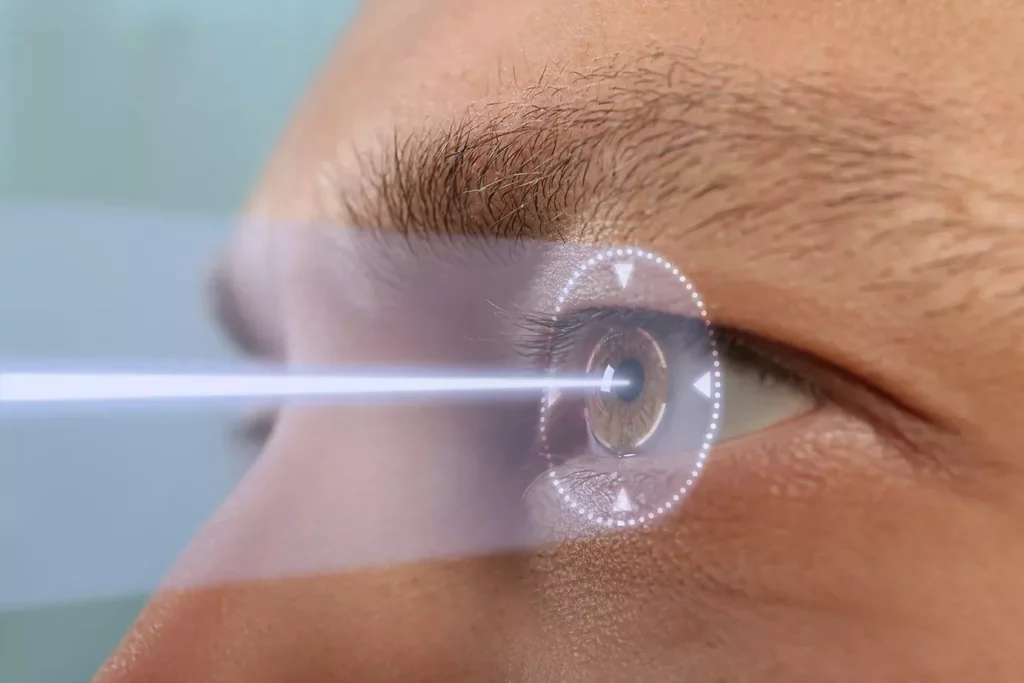Astigmatism is a common refractive error that can cause blurred vision due to an irregular shape of the cornea or lens. Many people may wonder if LASIK eye surgery is a viable solution to correct this condition. This article delves into the nature of astigmatism, the LASIK procedure, and important considerations for those contemplating this surgery.
Understanding Astigmatism
Astigmatism is a type of refractive error that affects the way light hits the retina. Individuals with astigmatism experience distortion in their vision because the cornea or lens is not symmetrical. This asymmetry prevents light rays from focusing evenly on the retina, leading to blurred or distorted vision at all distances. The condition can be present at birth or develop over time, and it can occur in conjunction with other refractive errors such as nearsightedness or farsightedness. Understanding astigmatism is essential for those who experience its effects, as it can significantly impact daily activities and overall quality of life.
After undergoing LASIK eye surgery, patients need to follow a strict post-operative care regimen to ensure the best results. This includes using prescribed eye drops, avoiding certain activities, and attending follow-up visits.
What is Astigmatism?
Astigmatism occurs when the cornea, the clear front surface of the eye, is shaped more like a football than a basketball. Instead of being evenly curved in all directions, the cornea has a more pronounced curvature in one direction. This uneven shape causes light to focus on multiple points, making it challenging for the brain to create a single, clear image. Astigmatism can vary in severity and may be classified as regular or irregular. Regular astigmatism is more common and involves a consistent pattern of curvature, while irregular astigmatism can result from conditions like keratoconus, where the cornea becomes progressively thinner and more conical in shape.

Causes and Symptoms of Astigmatism
Astigmatism can be caused by a variety of factors including genetics, eye injuries, or certain surgeries. Symptoms often include blurred vision, headaches, and eye strain, especially after prolonged reading or computer use. Understanding these symptoms is crucial for early diagnosis and effective treatment. In addition to these common symptoms, individuals may also experience difficulty with night vision or find it challenging to focus on fine details. Regular eye exams are essential for detecting astigmatism, as many people may not realize they have it until their vision is significantly affected. Eye care professionals can perform specific tests to measure the curvature of the cornea and determine the degree of astigmatism, which is vital for prescribing the appropriate corrective lenses or considering surgical options.
An Overview of LASIK Eye Surgery
LASIK, or Laser-Assisted In Situ Keratomileusis, is a popular surgical procedure designed to correct refractive errors such as myopia, hyperopia, and astigmatism. It utilizes advanced laser technology to reshape the cornea, allowing light rays to focus more accurately on the retina. This innovative approach has transformed the lives of millions, providing a pathway to clearer vision without the need for glasses or contact lenses. As technology continues to evolve, LASIK remains at the forefront of vision correction methods, offering patients a reliable option for achieving their visual goals.
The LASIK Procedure: What to Expect
The LASIK procedure typically takes less than 30 minutes and is performed on an outpatient basis. Patients can expect to undergo a pre-operative evaluation to determine their candidacy for the surgery. During the surgery, the doctor will create a thin flap in the cornea and use a laser to reshape the underlying tissue. Once the cornea has been reshaped, the flap is replaced, allowing for a smooth recovery. The precision of the laser technology ensures that the reshaping process is both accurate and minimally invasive, which contributes to the rapid recovery times associated with the procedure. Find more about precision on https://www.ncsu.edu/labwrite/Experimental%20Design/accuracyprecision.htm
Most patients report a quick recovery, often experiencing improved vision within hours. However, initial discomfort or dryness may occur, and patients are advised on post-operative care to enhance recovery. Many clinics provide a comprehensive follow-up schedule to monitor healing and address any concerns, ensuring that patients feel supported throughout their recovery journey. Additionally, advancements in LASIK techniques, such as wavefront technology, have further refined the procedure, allowing for personalized treatment plans that cater to the unique visual needs of each patient.
Potential Risks and Complications of LASIK
While LASIK has a high success rate, it is not without potential risks. Patients may experience dry eyes, glare, halos, or even over-correction or under-correction of vision. It is crucial for potential candidates to discuss these risks with their surgeon and ensure a comprehensive evaluation to assess suitability for the procedure. Surgeons typically use a variety of diagnostic tools to measure corneal thickness, curvature, and overall eye health, which helps in creating a tailored approach to each individual’s treatment.
Furthermore, some patients may be at a higher risk for complications due to pre-existing conditions or lifestyle factors. For instance, individuals with certain autoimmune disorders or those who engage in high-impact sports may need to consider alternative vision correction options. Understanding these nuances is vital, and patients are encouraged to have open discussions with their healthcare providers to make informed decisions about their eye health. The goal of LASIK is not only to improve vision but also to ensure long-term ocular health and comfort.
LASIK and Astigmatism: A Comprehensive Analysis
Understanding how LASIK addresses astigmatism is critical for those considering the surgery. By reshaping the cornea to a more uniform curvature, LASIK can effectively reduce or eliminate the refractive error caused by astigmatism. This procedure not only enhances visual acuity but also improves overall quality of life, allowing individuals to engage in activities without the hindrance of glasses or contact lenses. Many patients report a newfound freedom in their daily routines, from participating in sports to enjoying outdoor activities, all made possible by clearer vision.
How LASIK Corrects Astigmatism
LASIK corrects astigmatism by using a laser to remove precise amounts of corneal tissue, allowing the light rays to focus directly onto the retina. The specific laser settings used to treat astigmatism can vary based on the degree of the condition. Custom LASIK procedures, which use wavefront technology, can further enhance the precision of the treatment, tailoring the procedure to the unique characteristics of each patient’s eyes. This individualized approach means that even complex cases of astigmatism can be addressed effectively, leading to improved visual outcomes. Additionally, advancements in technology have led to faster recovery times and reduced discomfort during and after the procedure, making LASIK an increasingly popular choice among patients. To know more about technology click here.
Success Rates of LASIK for Astigmatism
Research has shown that LASIK surgery has a high success rate for treating astigmatism, with the vast majority of patients achieving 20/25 vision or better after the surgery. Many factors, including the severity of astigmatism, overall eye health, and adherence to post-operative care, can influence outcomes. Regular follow-ups with the surgeon post-surgery are essential for monitoring recovery and ensuring optimal vision quality. Furthermore, studies indicate that patient satisfaction rates are remarkably high, with many individuals expressing relief and gratitude for the improved vision. The emotional and psychological benefits of LASIK cannot be overlooked, as patients often experience a boost in confidence and a reduction in the daily frustrations associated with corrective lenses.
Post-LASIK Care for Astigmatism Patients
Recovery Process After LASIK Surgery
The recovery process generally begins with an adjustment period where patients might experience mild discomfort or fluctuations in vision. It is typical for vision to stabilize over the weeks following the surgery. Patients are often advised to rest their eyes and gradually resume normal activities, ensuring to avoid environments that may irritate the eyes, such as windy or dusty places. During this time, it’s also important for patients to stay hydrated and maintain a healthy diet, as these factors can contribute to overall eye health. Incorporating foods rich in omega-3 fatty acids, vitamins A, C, and E, and antioxidants can support healing and improve visual acuity.
Long-Term Vision Care Following LASIK
Long-term care involves regular eye exams to monitor vision stability and eye health. While LASIK is designed to provide long-term correction for astigmatism, some patients may still require glasses or contact lenses for specific tasks, such as reading or night driving. Staying vigilant about eye health and protective measures can further enhance the longevity of surgical benefits. Additionally, patients are encouraged to practice good eye hygiene, which includes avoiding touching the eyes with unwashed hands and using protective eyewear during activities that pose a risk of injury. Furthermore, understanding the importance of UV protection is crucial; wearing sunglasses that block 100% of UVA and UVB rays can help shield the eyes from harmful sunlight, thereby preserving vision quality over time.
Making the Decision: Is LASIK Right for You?
Deciding to undergo LASIK surgery is a significant step that requires careful consideration of various factors. Potential candidates must evaluate their overall eye health, lifestyle, and vision goals, and how these align with the potential outcomes of LASIK.

Factors to Consider Before Undergoing LASIK
Before undergoing LASIK, it’s important to consider the following:
- Type and severity of astigmatism
- Overall eye health, including existing conditions
- Realistic expectations regarding surgery outcomes
- Potential risks and complications specific to your situation
Additionally, understanding the financial investment and insurance coverage for LASIK surgery is essential for making an informed decision.
Consultation and Pre-Surgery Evaluation
Consultation with an experienced eye surgeon is key to determining candidacy for LASIK. This evaluation includes a thorough eye examination, discussion of medical history, and vision needs. It is during this consultation that the surgeon will explain the procedure in detail and help patients make an informed choice based on their specific circumstances.
Ultimately, understanding astigmatism and the LASIK procedure can empower patients as they navigate their vision correction options. For many, LASIK presents a promising opportunity to achieve clearer, more vibrant vision free from the constraints of glasses or contacts.
Learn about cataract operation on: What to Expect During a Cataract Operation Consultation

